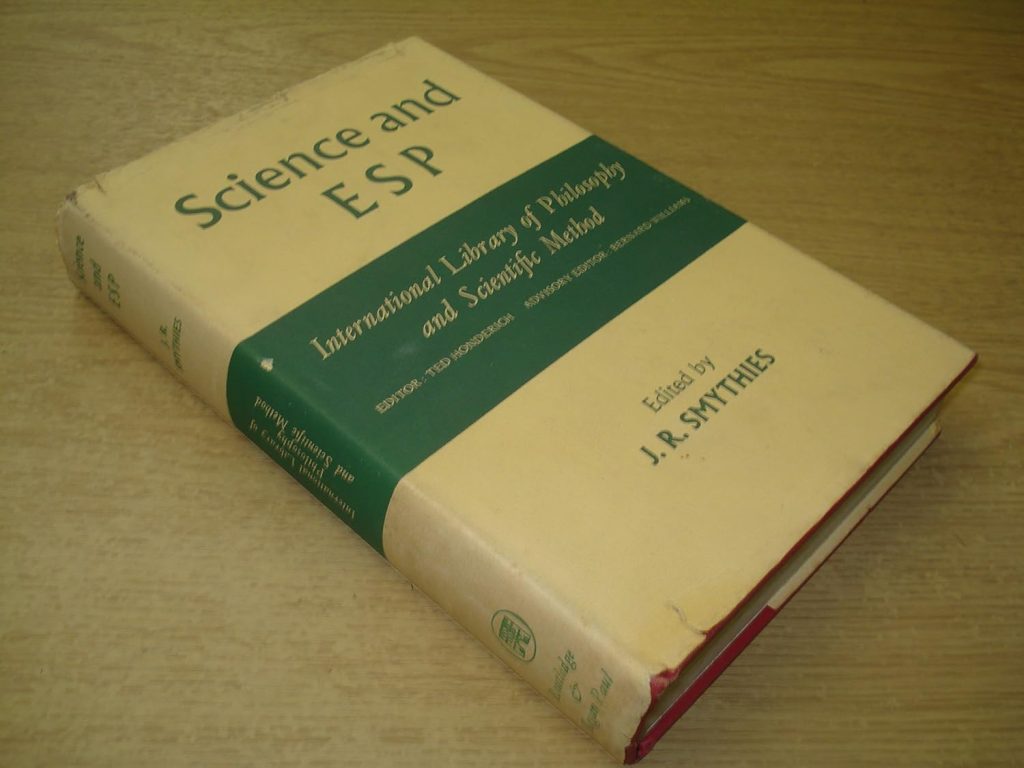ESP and Science
ESP and science has a long and complicated relationship spanning decades. Here’s the strongest scientific evidence for ESP, based on decades of research by reputable (but controversial) figures in parapsychology. It is unfortunate that Al G Manning wasn’t more visible during these trials and research which gave ESP a firmer footing in the science world.
🔍 1. Ganzfeld Experiments (Telepathy)
Key Researcher: Charles Honorton (1980s), later Daryl Bem & Dean Radin
- Setup: One person (the “receiver”) sits in a sensory-reduced environment (e.g., with white noise and halved ping-pong balls over their eyes) to encourage a relaxed, meditative state. Another person (the “sender”) attempts to mentally transmit an image or video clip.
- Results: In well-controlled trials, receivers guessed the correct target about 32% of the time, where 25% would be expected by chance.
- Meta-analyses (Honorton & Bem, 1994; Storm et al., 2010) concluded:
- Over hundreds of trials, effect sizes were small but statistically significant (p < 0.01).
- This suggests something beyond random guessing.
✅ Why it matters: The Ganzfeld protocol aimed to address criticisms of earlier ESP studies by using strict blinding, automation, and randomization.
🔮 2. Precognition Studies (Feeling the Future)
Key Researcher: Daryl Bem (Cornell University, 2011)
- Setup: In 9 experiments, students guessed where erotic or neutral images would appear, or what words would later be tested—before the stimulus was actually chosen by a computer.
- Claimed Results: In some cases, participants performed better than chance, even though the future event hadn’t occurred yet.
- Bem’s interpretation: Human consciousness might be “non-linear” in time.
✅ Why it matters: Bem published his findings in a peer-reviewed psychology journal (Journal of Personality and Social Psychology), sparking widespread attention. ESP and science re-enter the spotlight of public interest.
🧪 Caveat: Multiple replication attempts failed, but Bem and others argued the failures were due to differences in setup or motivation.
🌐 3. PEAR Lab (Princeton Engineering Anomalies Research)
Key Researcher: Robert Jahn (former Dean of Engineering at Princeton)
- Focus: Psychokinesis and ESP using random number generators (RNGs).
- Method: Participants tried to mentally influence machines that output random 1s and 0s.
- Results: Over millions of trials, small deviations from chance were reported, consistent with intentional mental influence.
✅ Why it matters: The lab operated at a prestigious university for decades and published decades of consistent data suggesting tiny but statistically significant effects.
📘 4. Dean Radin’s Meta-Analyses
Other Books:
The Conscious Universe (1997),
Entangled Minds (2006)
- Dean Radin, a former Bell Labs scientist, compiled meta-analyses of thousands of ESP experiments.
- Claimed that:
- ESP effects are statistically real, though subtle.
- Rejection by mainstream science is more about philosophy (materialism) than data.
- Cites over 1000 studies, claiming consistent small effects with p-values far beyond chance.
✅ Why it matters: Radin’s statistical approach seeks to show that ESP is not one-off—it emerges when looking at many experiments together.
🧠 5. Quantum Consciousness Theories
While not evidence, some physicists (e.g., Roger Penrose) and parapsychologists propose that quantum mechanics could explain ESP by:
- Nonlocality (instantaneous connection over distance)
- Entanglement of consciousness and matter
- A yet-unknown role for consciousness in quantum collapse
✅ Why it matters: These ideas provide a possible framework in which ESP might be physically real—though speculative and unproven.
⚖️ Summary: Best Evidence for ESP and science.
| Source | Phenomenon | Result |
| Ganzfeld Experiments | Telepathy | Above-chance hits, p < 0.01 |
| Bem’s Precognition | Seeing the future | Initial success, poor replication |
| PEAR Lab | RNG influence | Micro-psychokinesis |
| Dean Radin Meta-analyses | Overall ESP | Consistent small effects |
| Quantum Theories | Theory basis | Hypothetical mechanism |
Author: Howard Sherman

